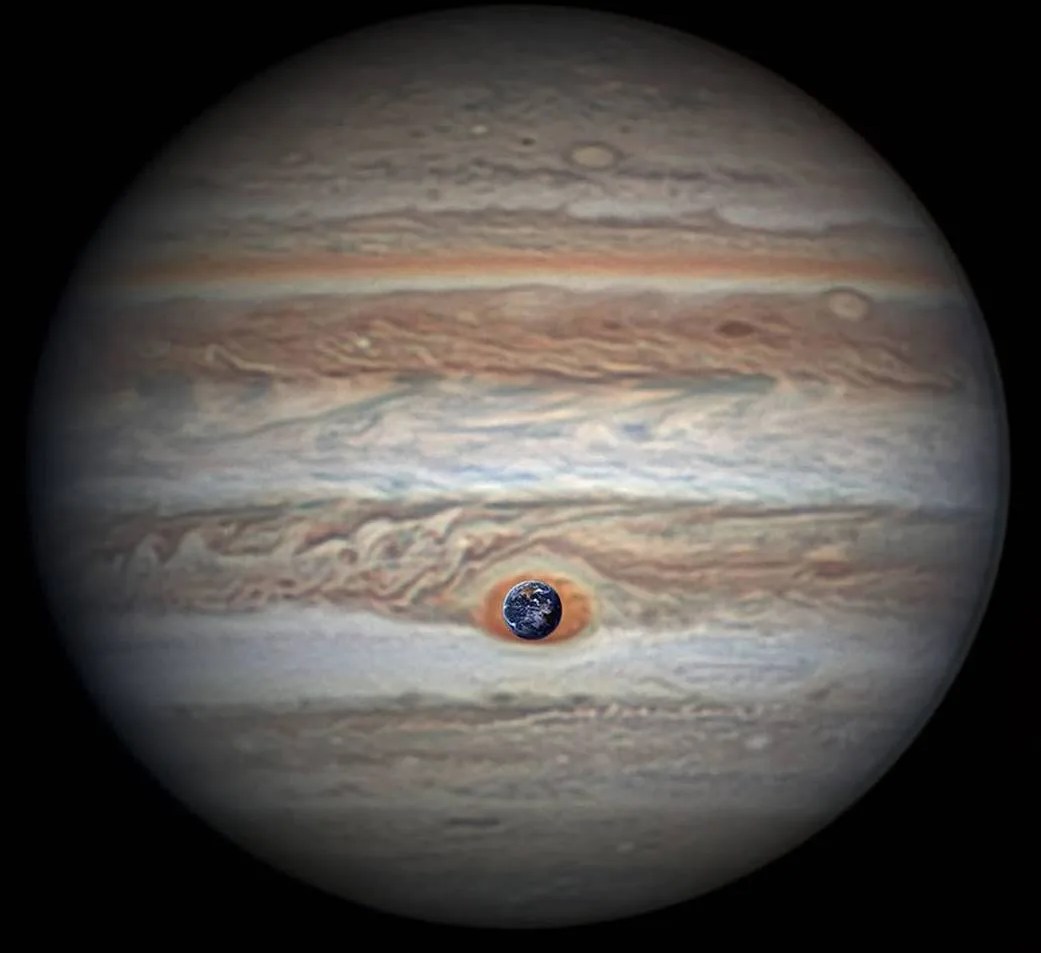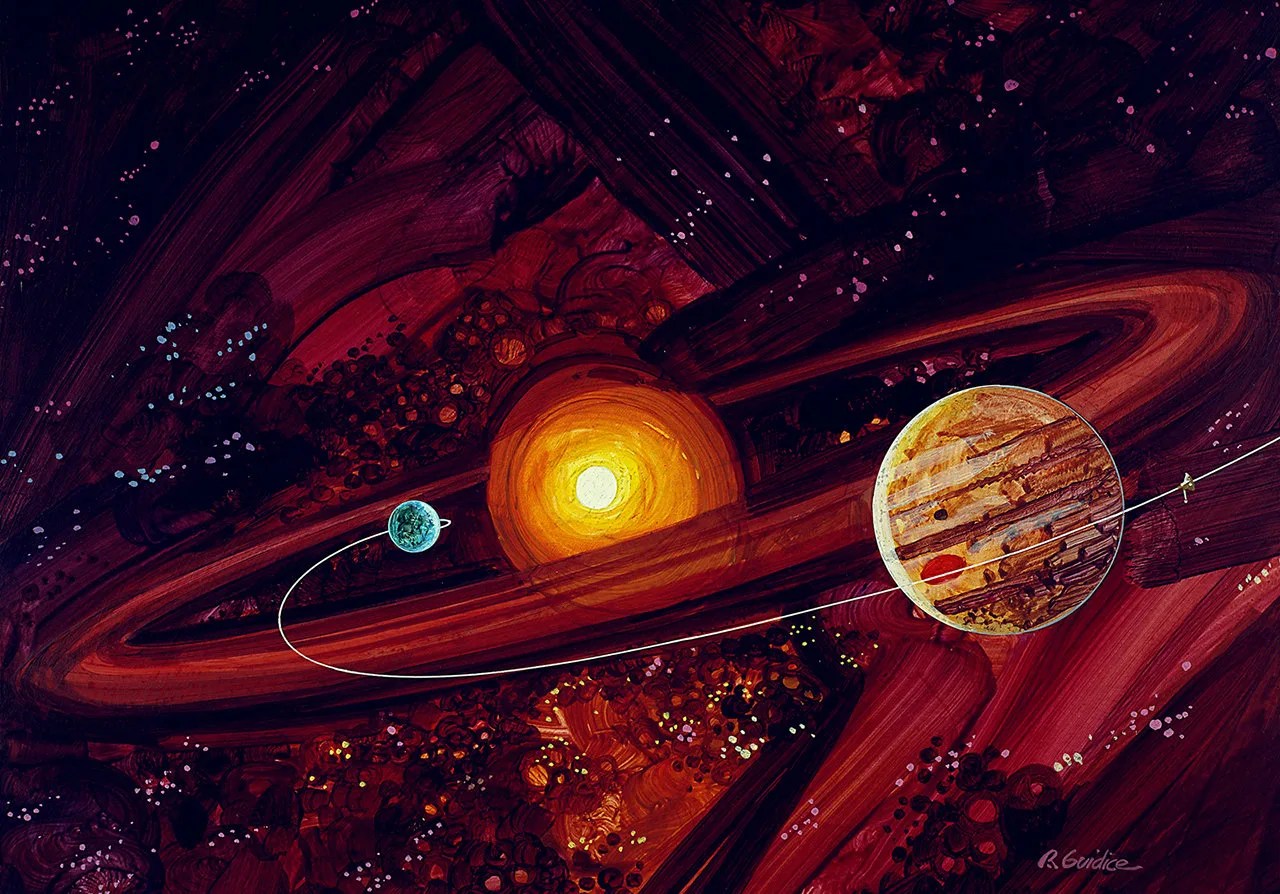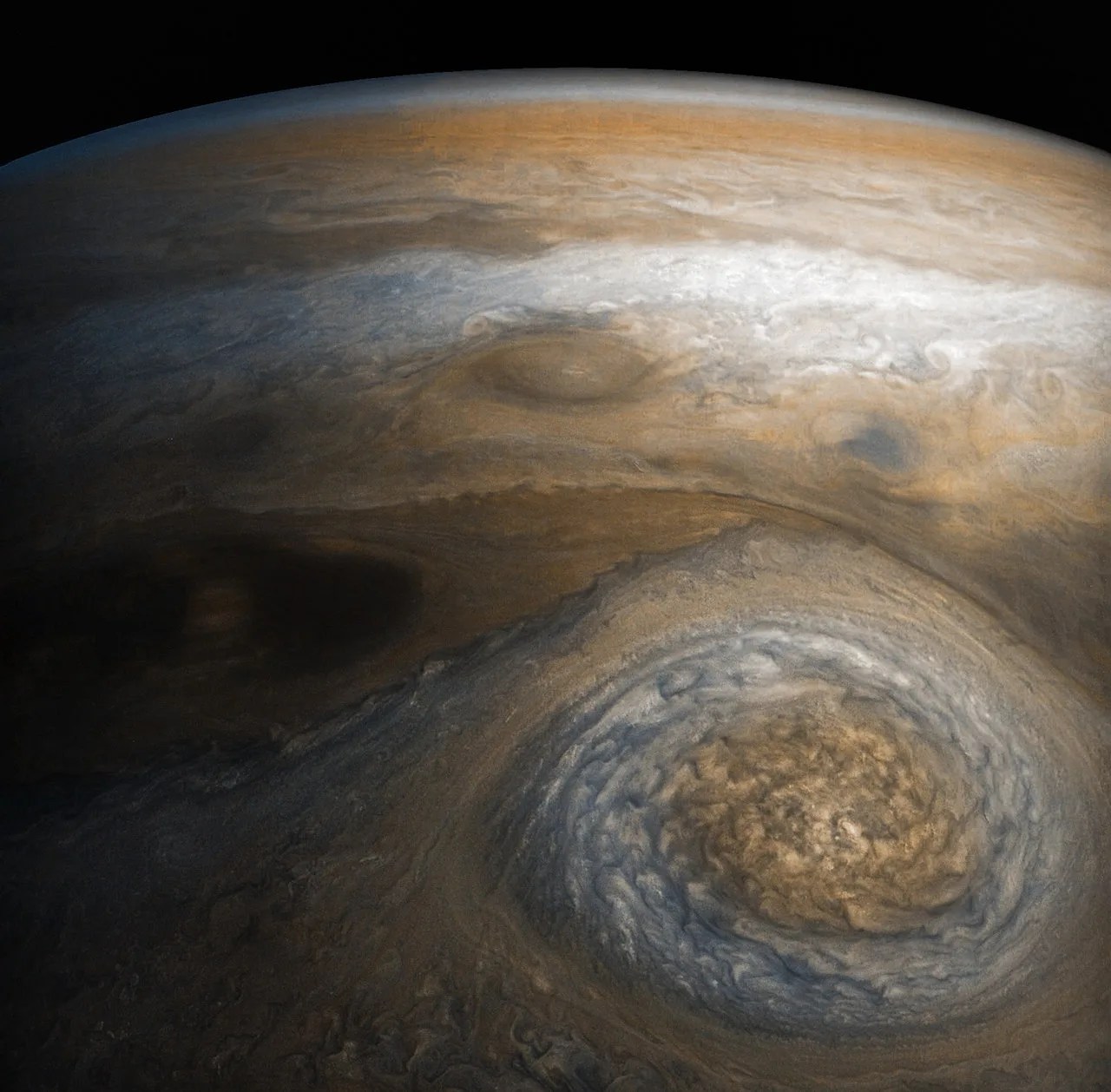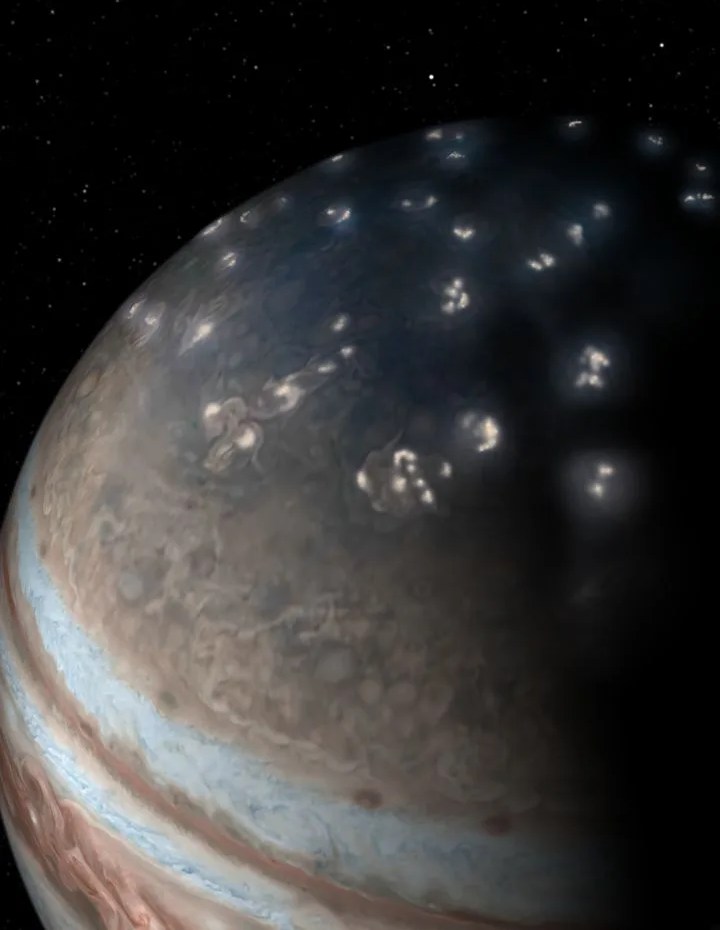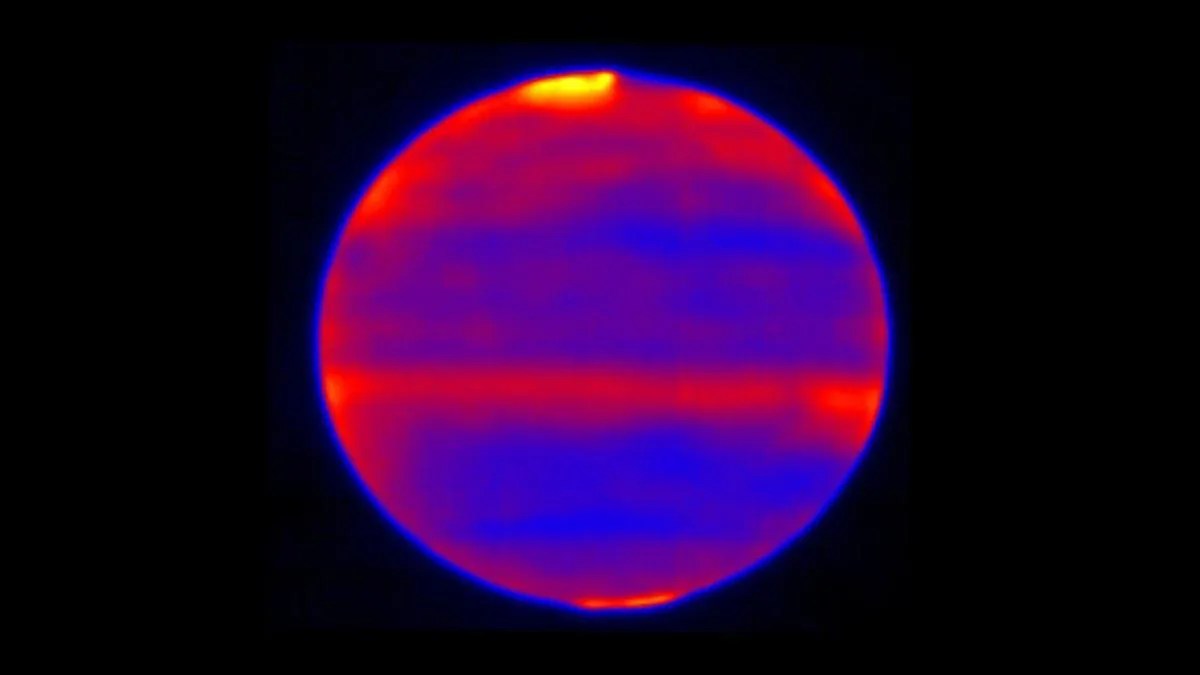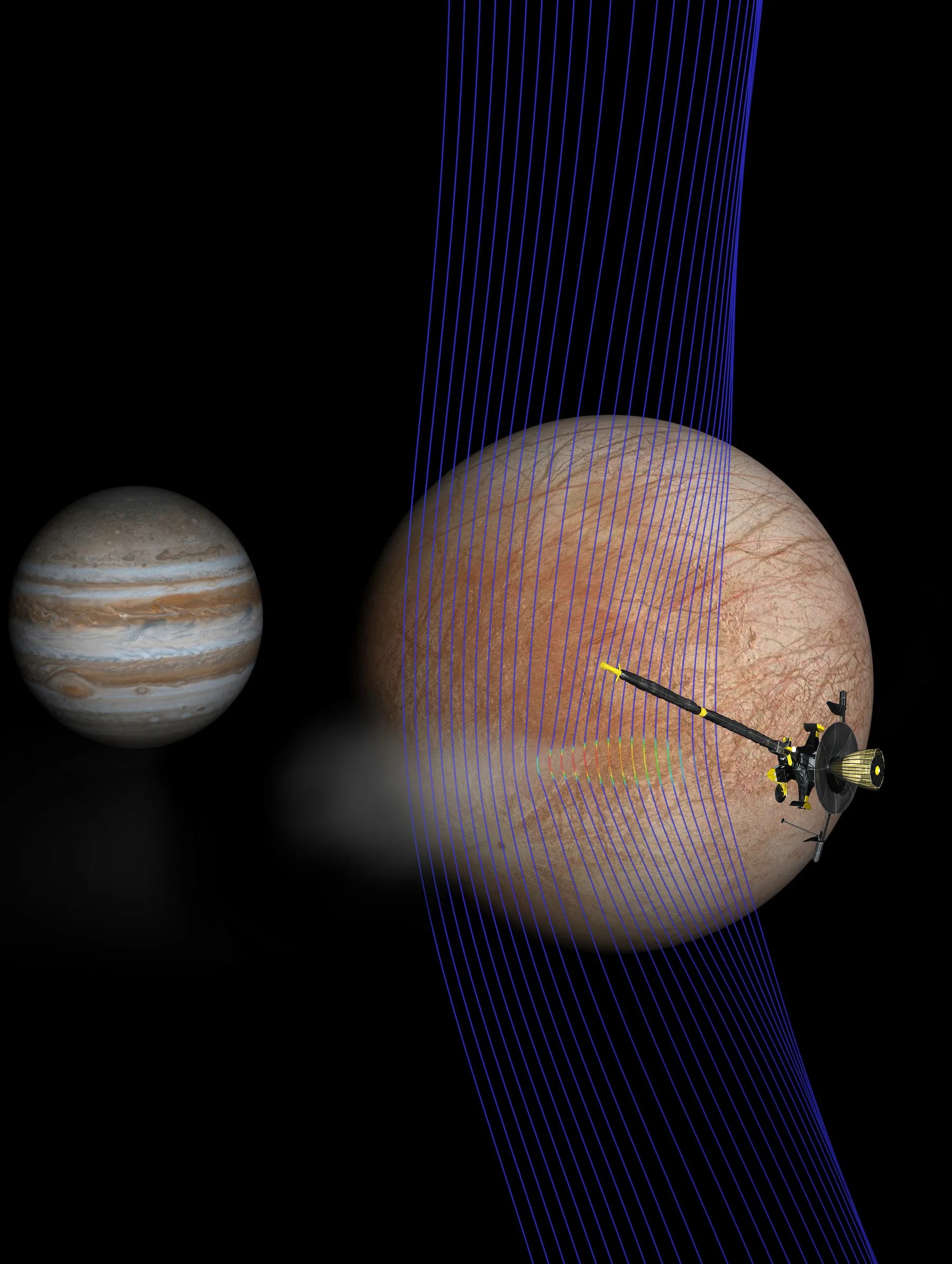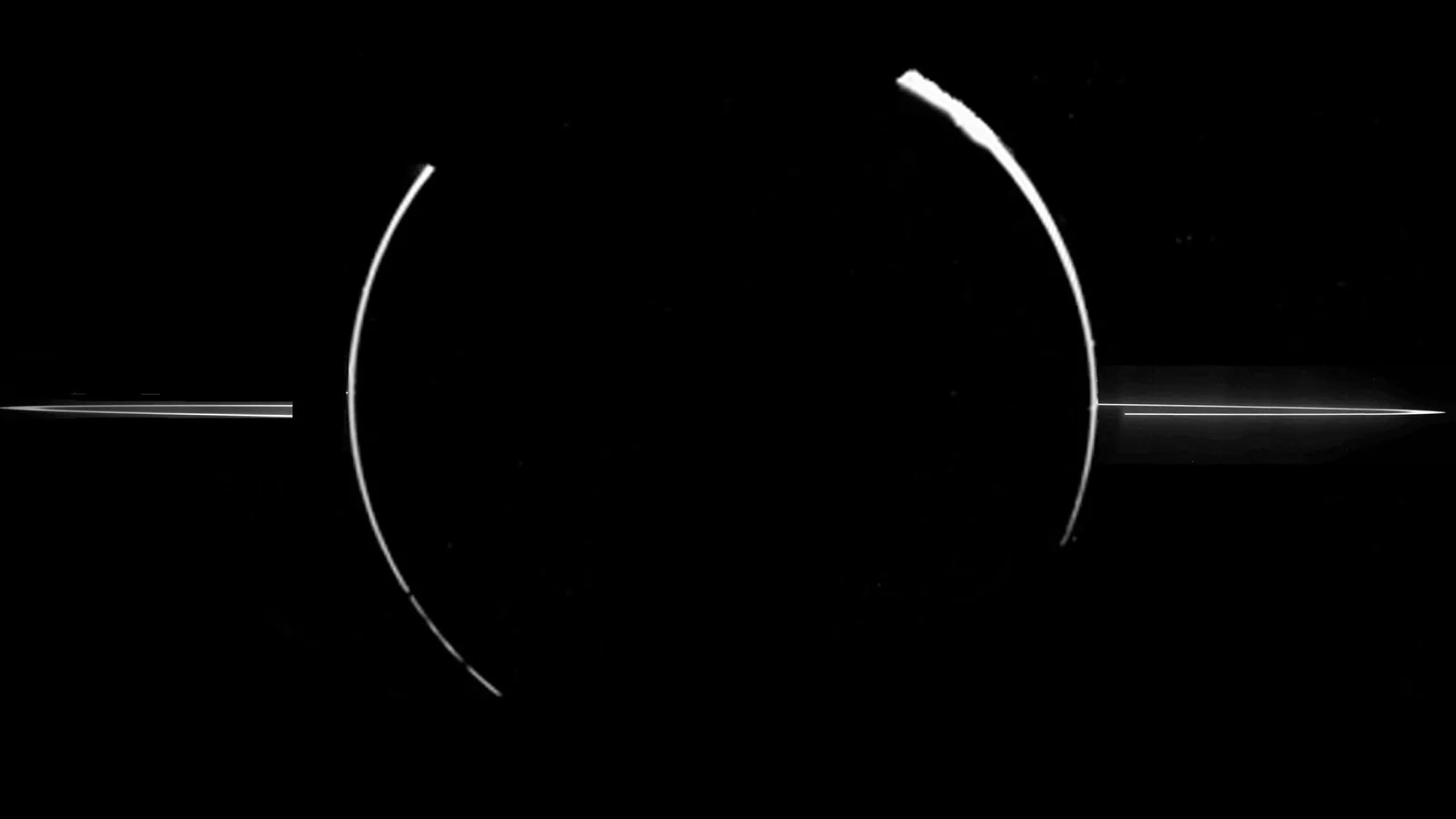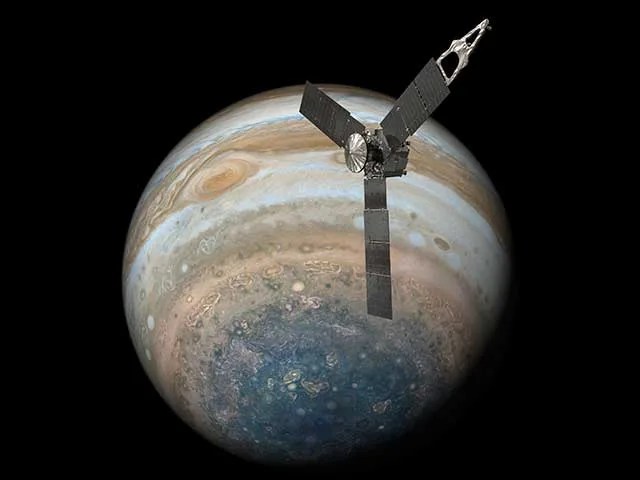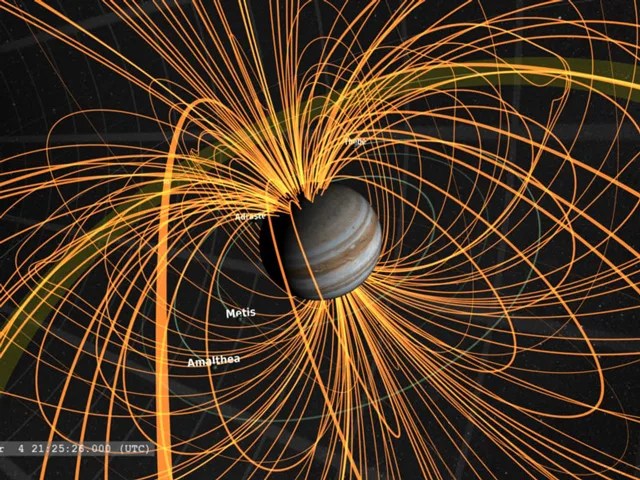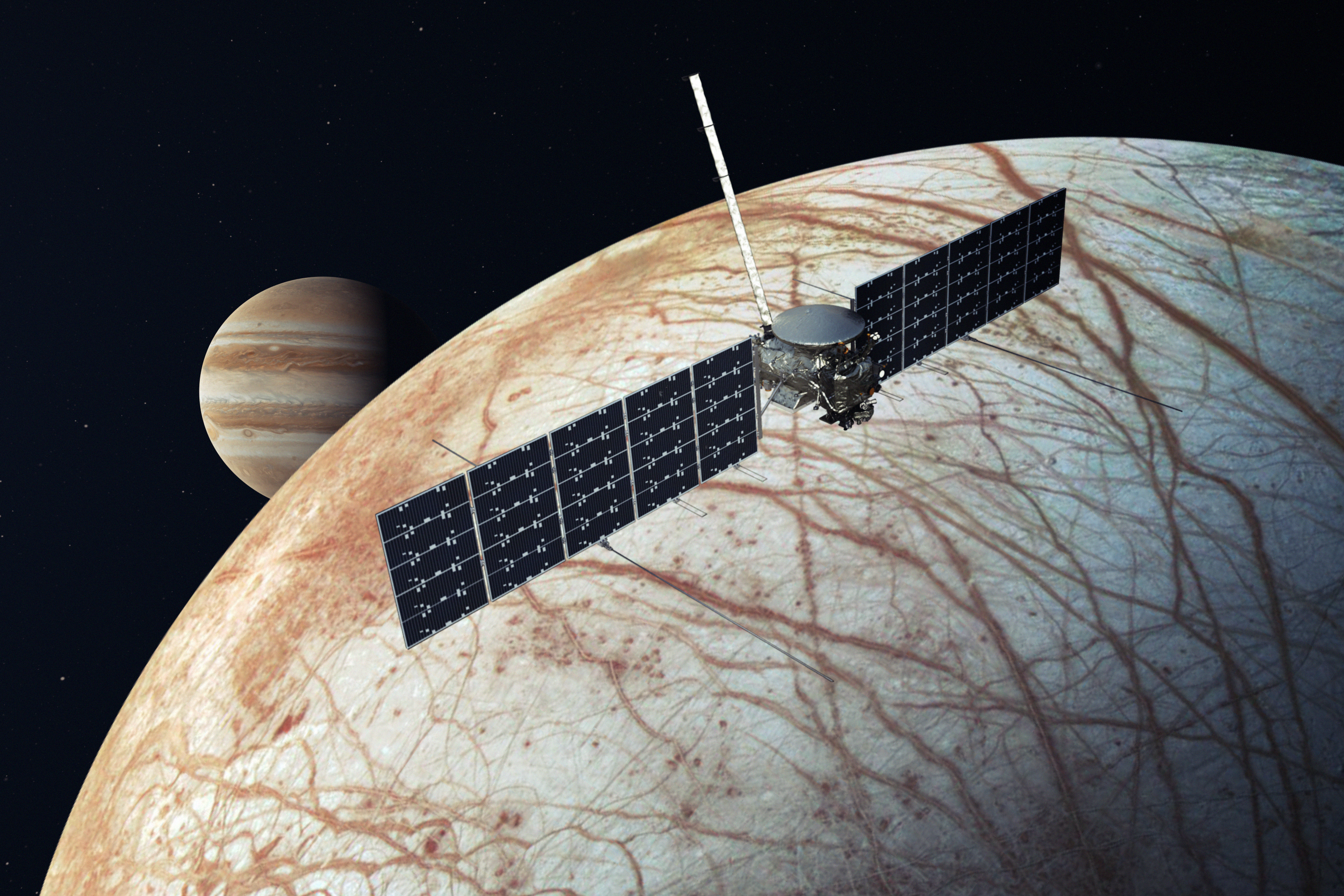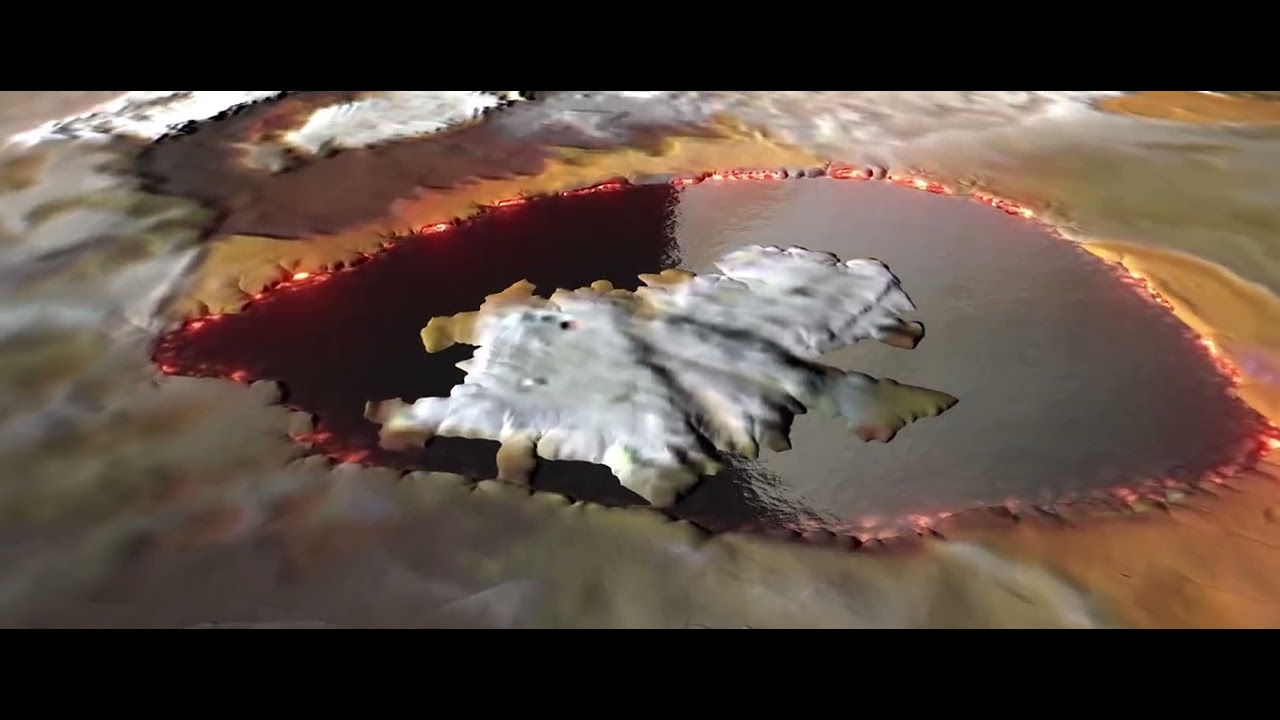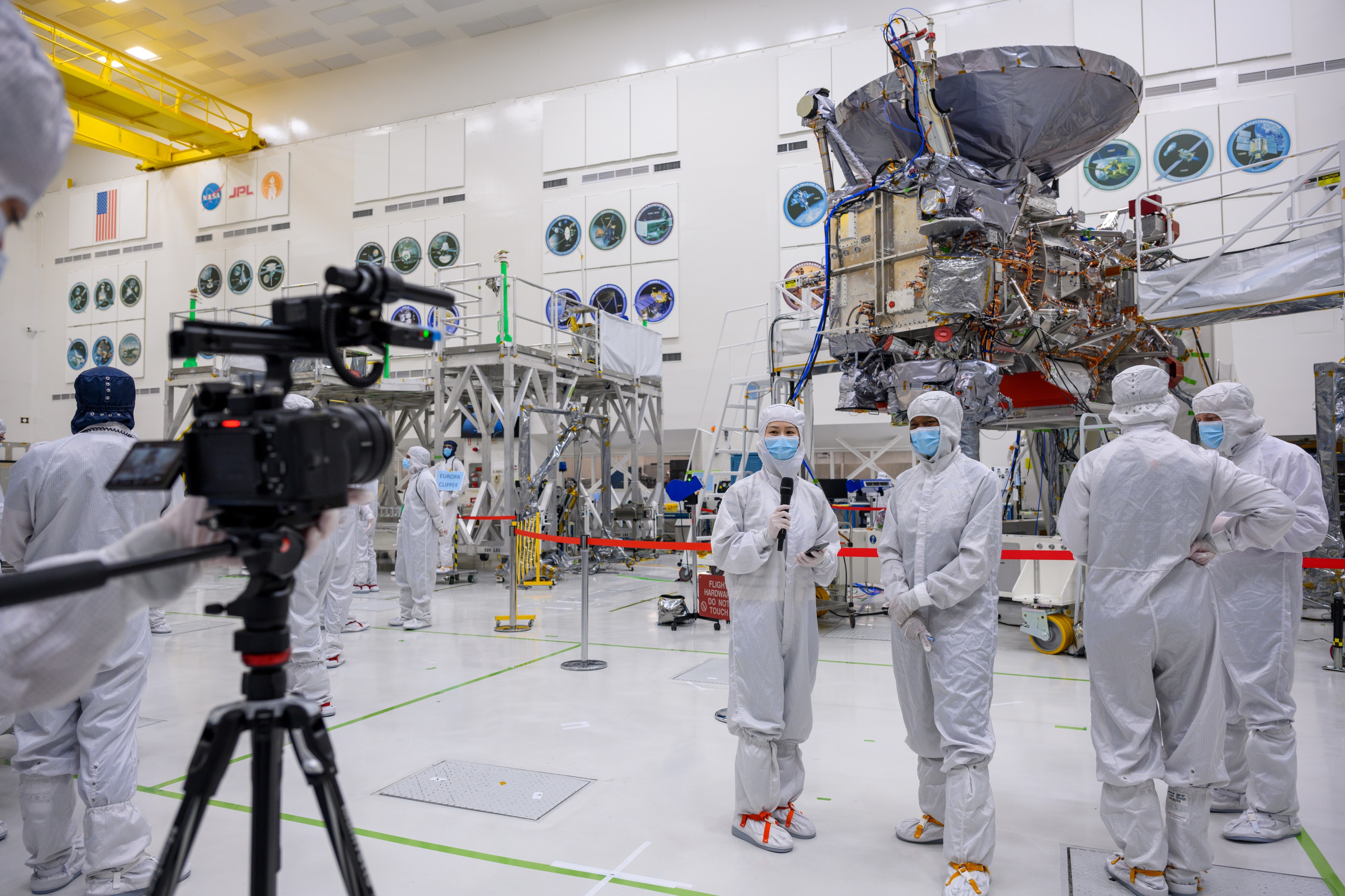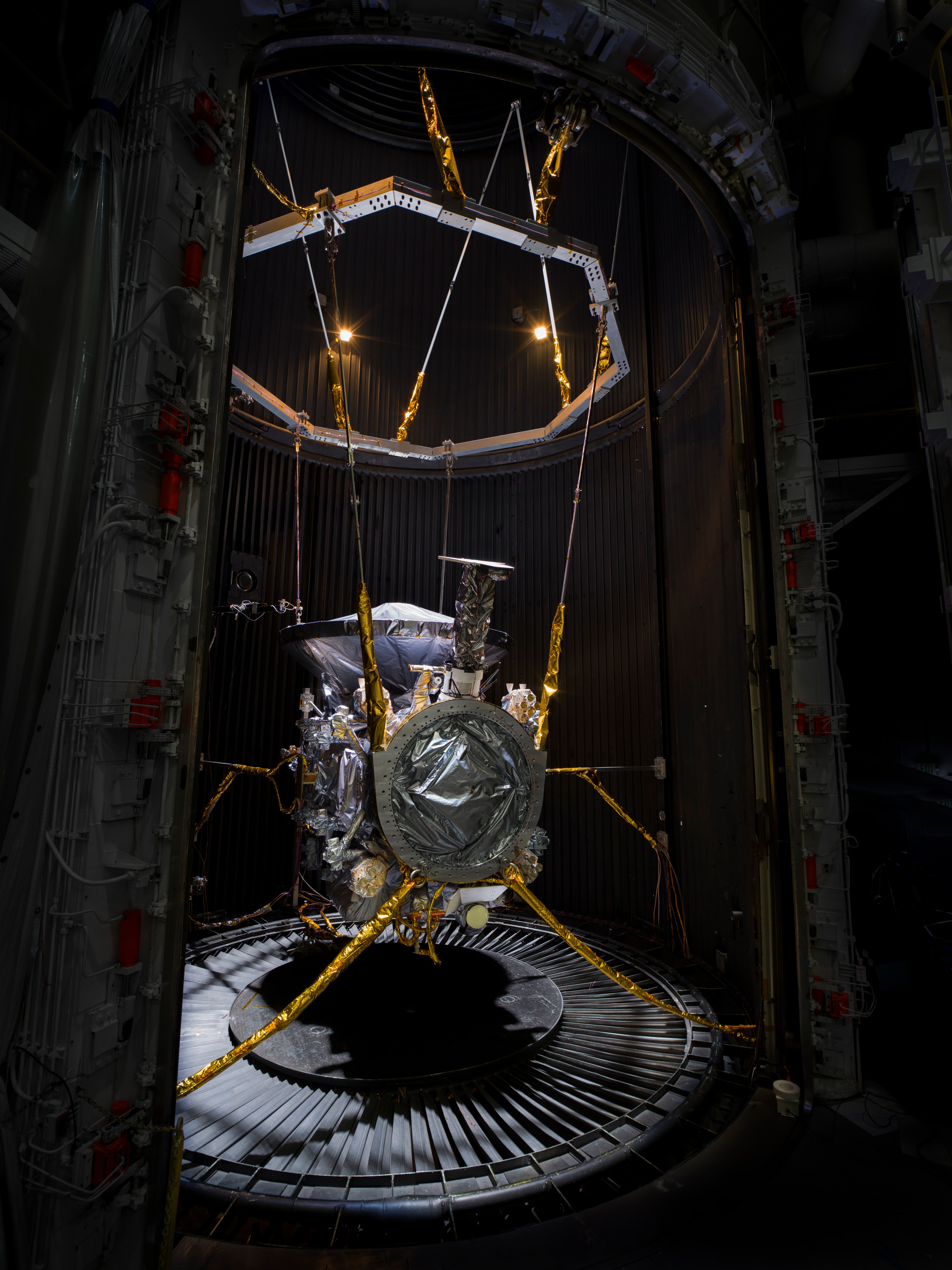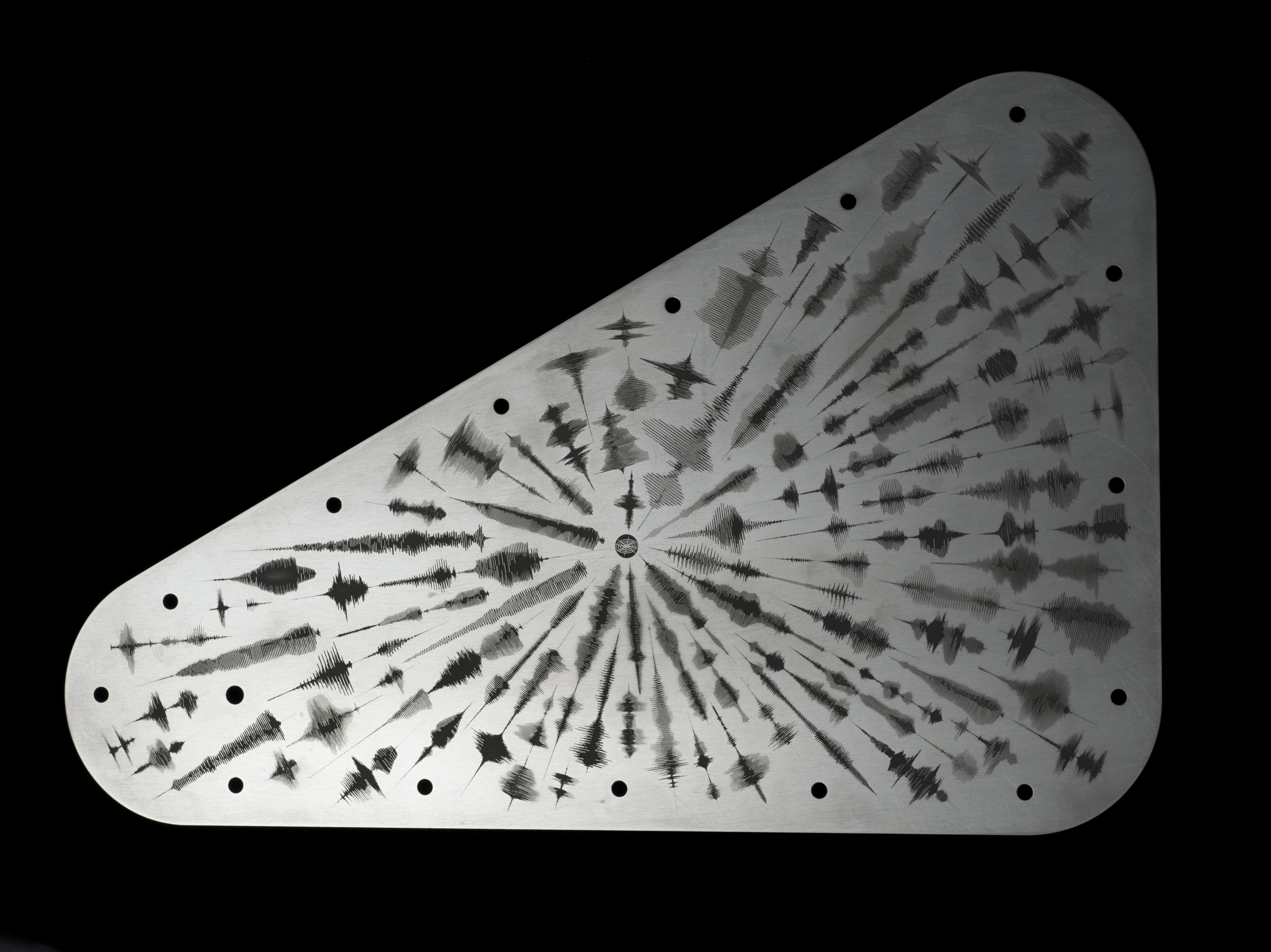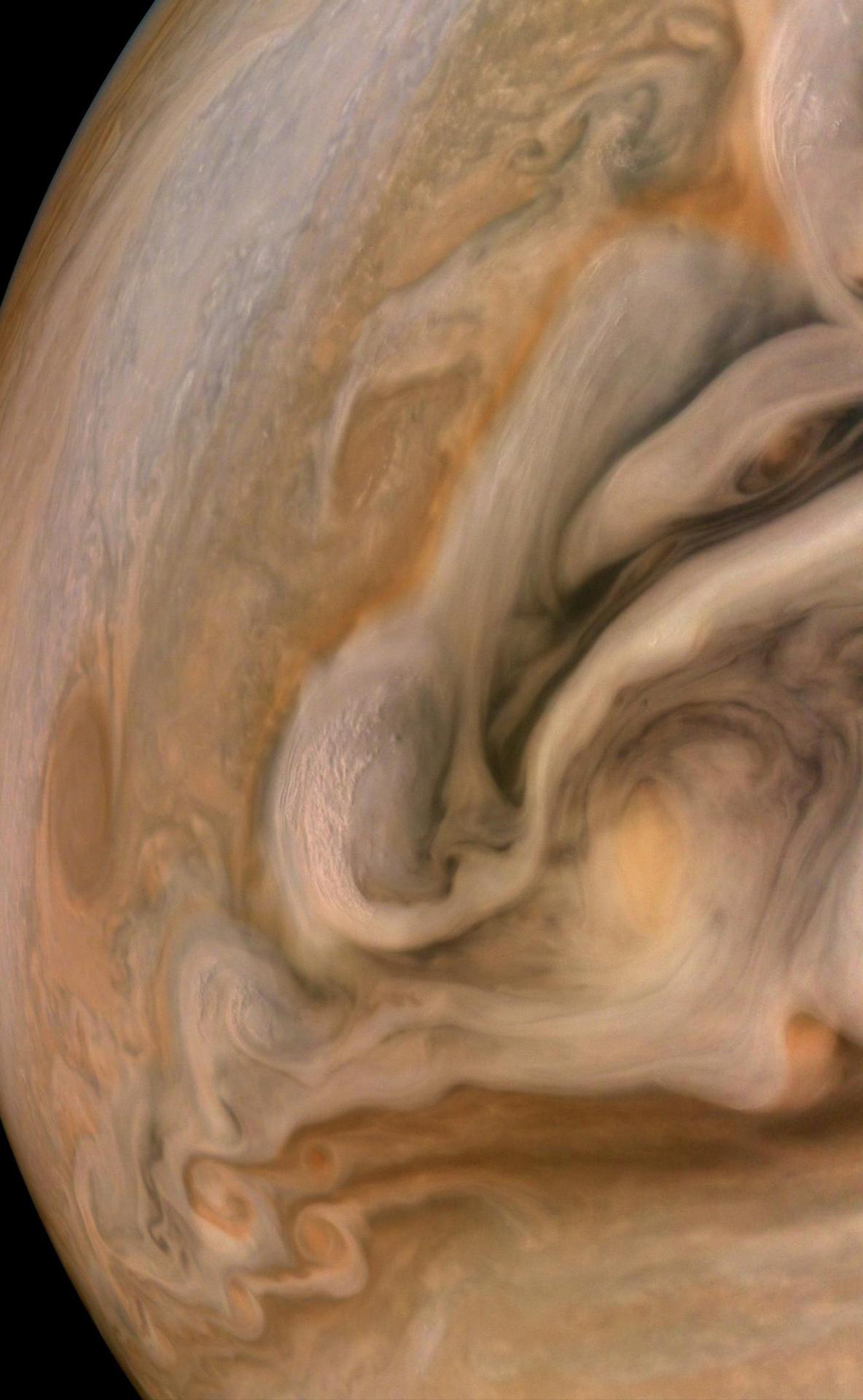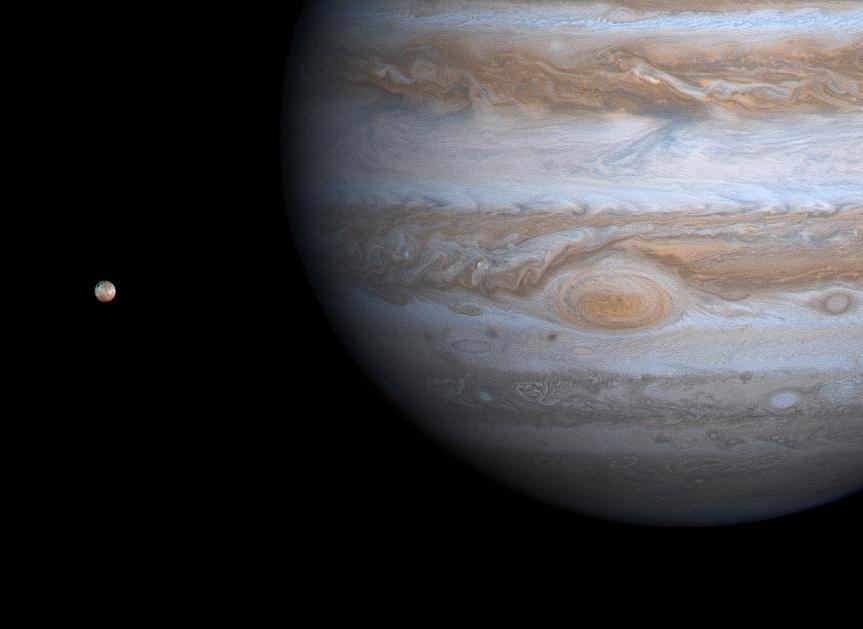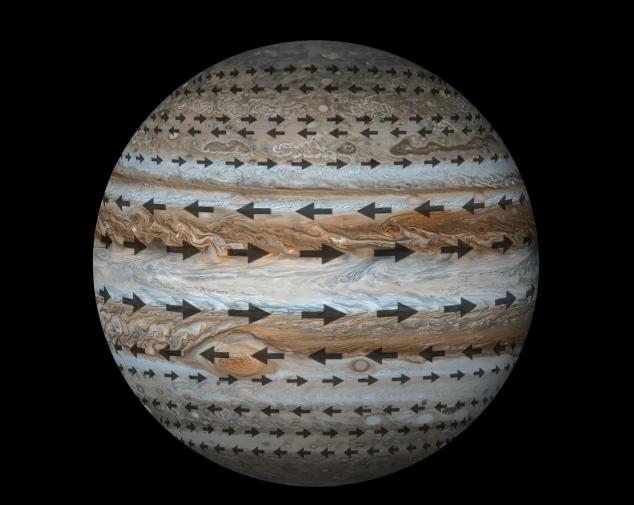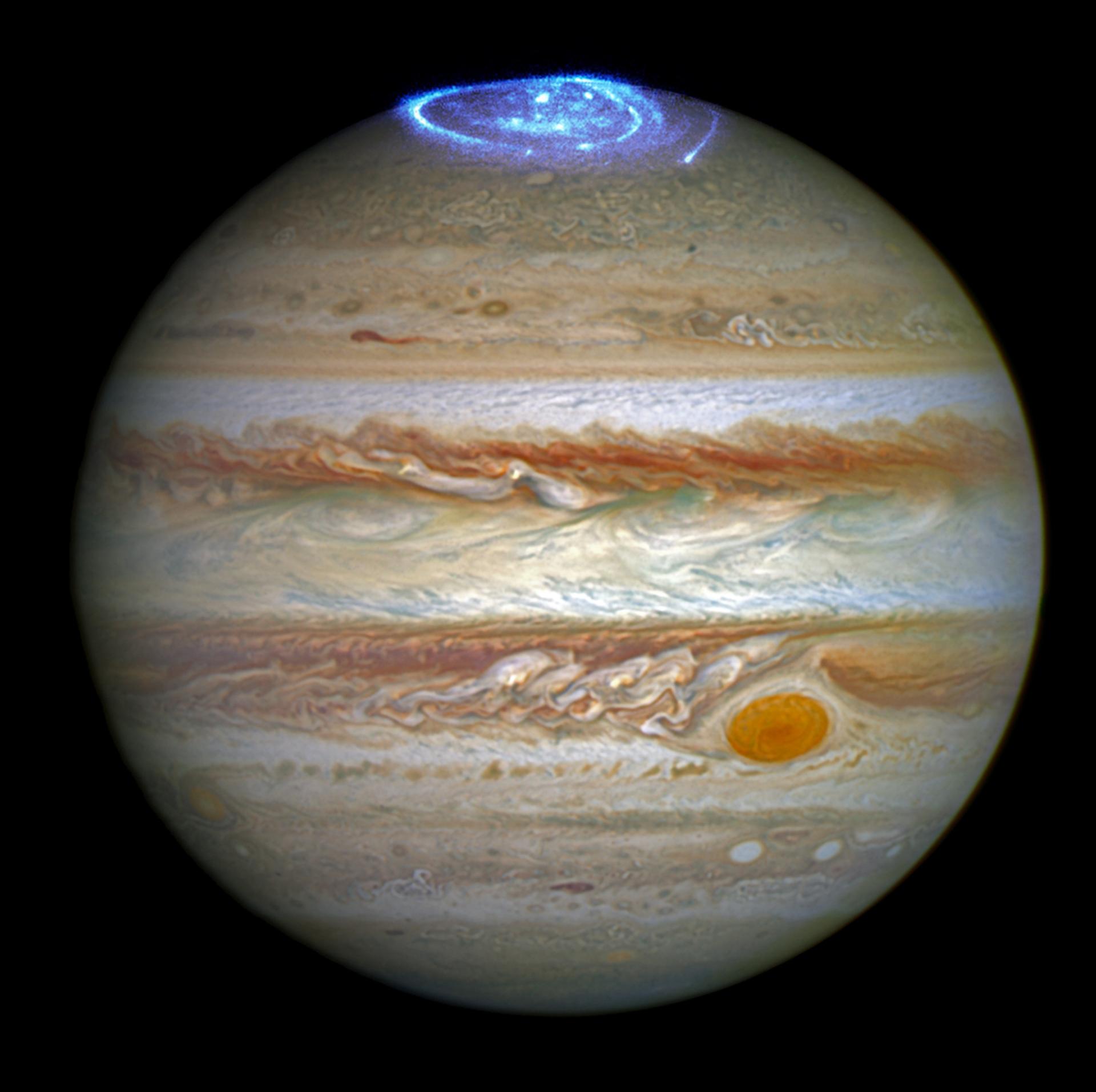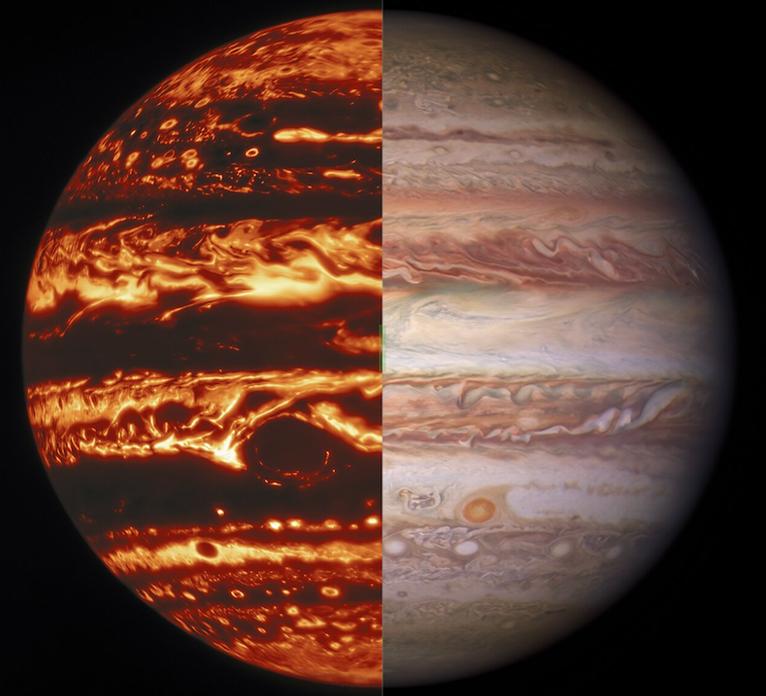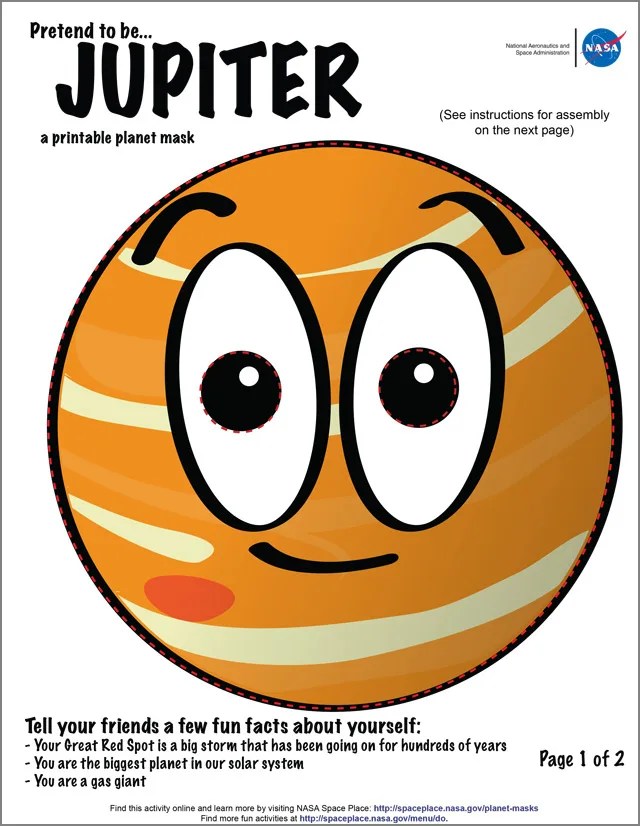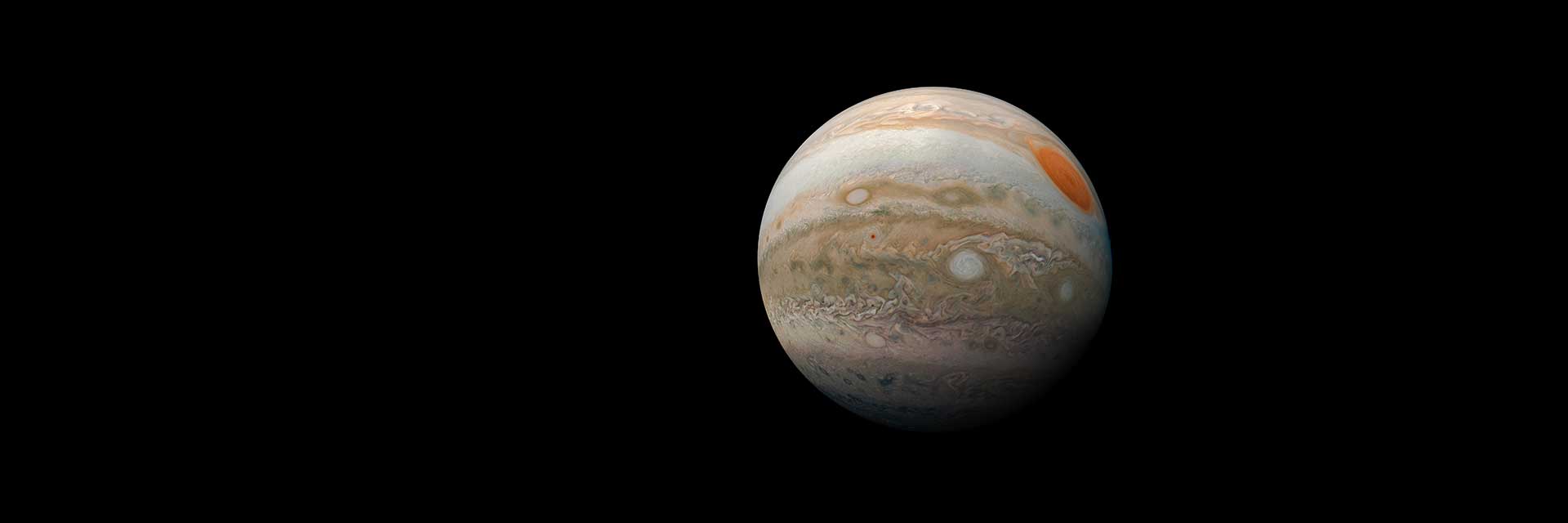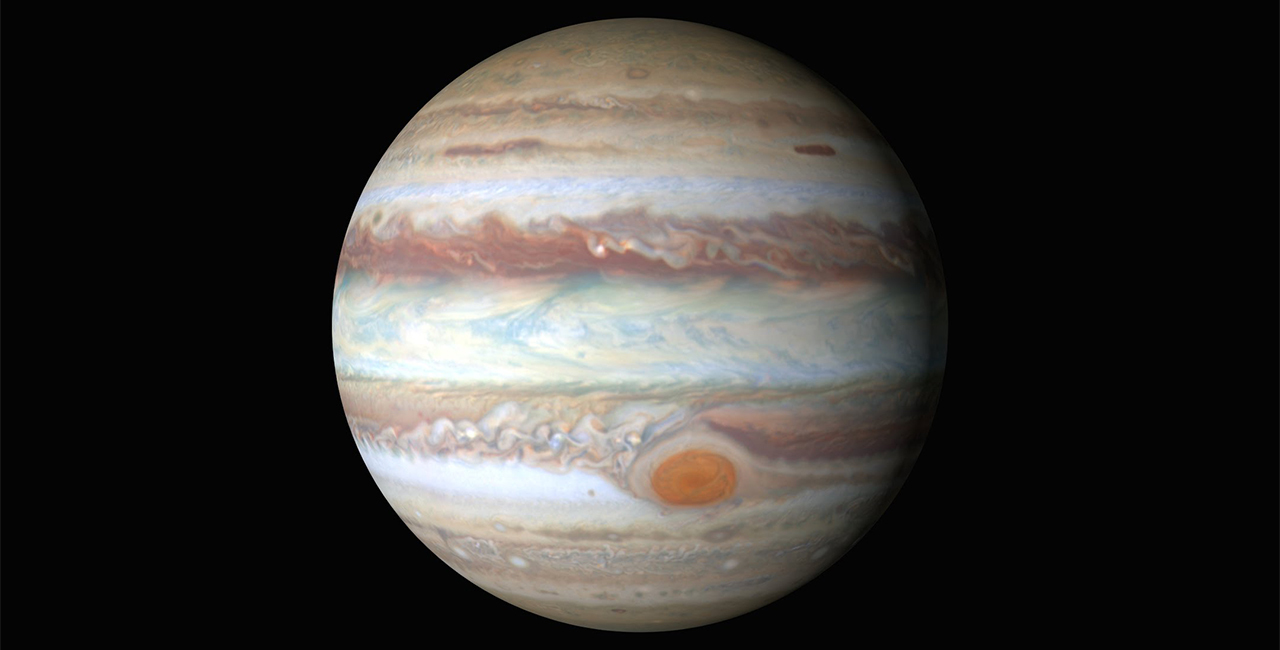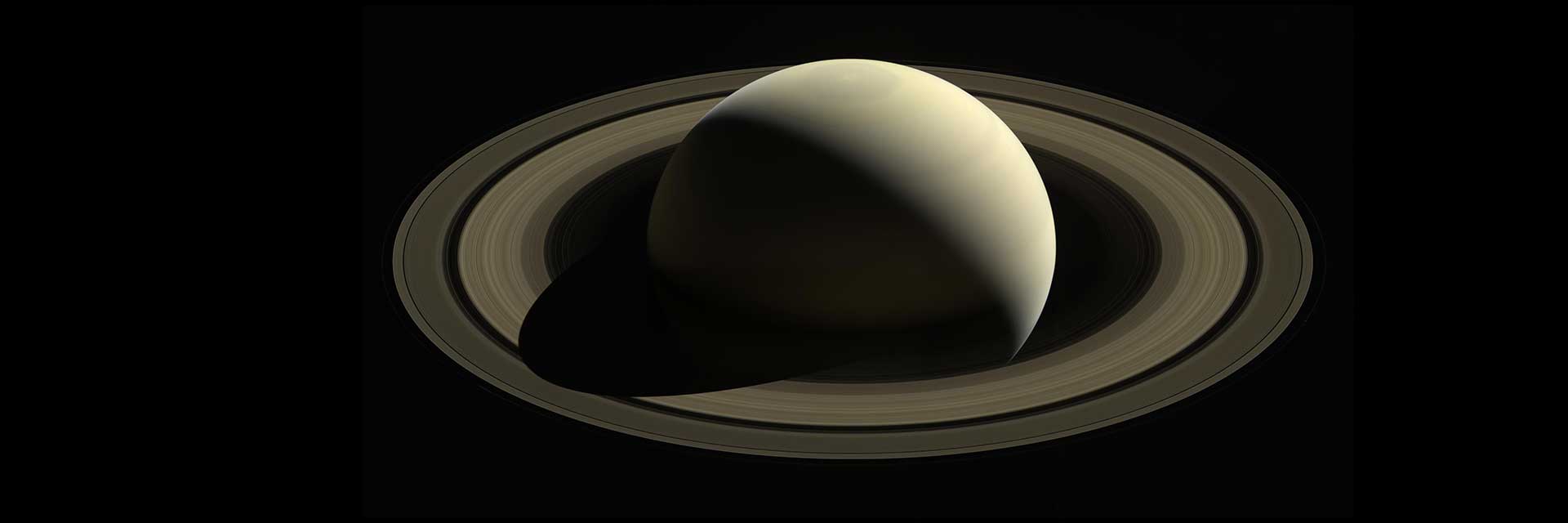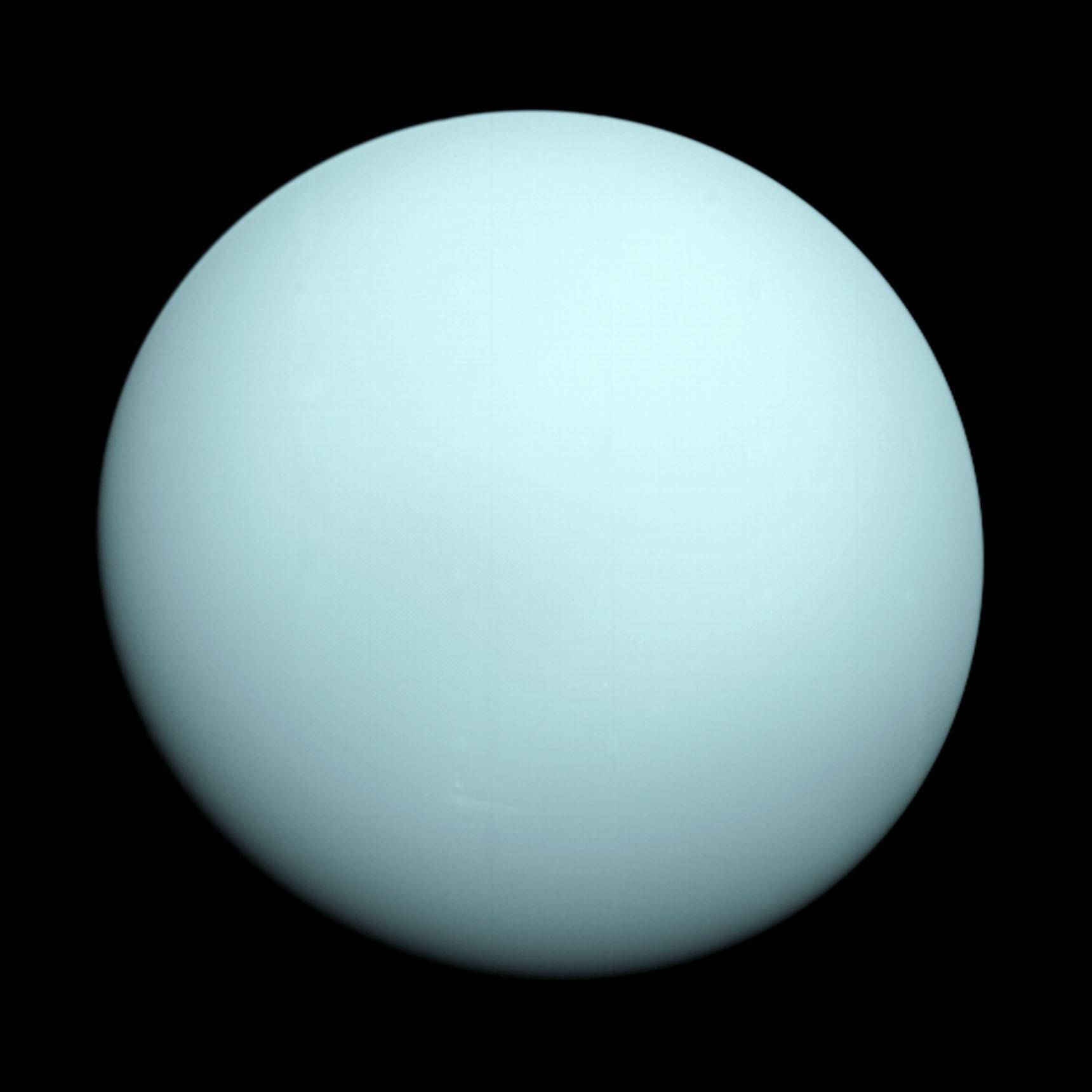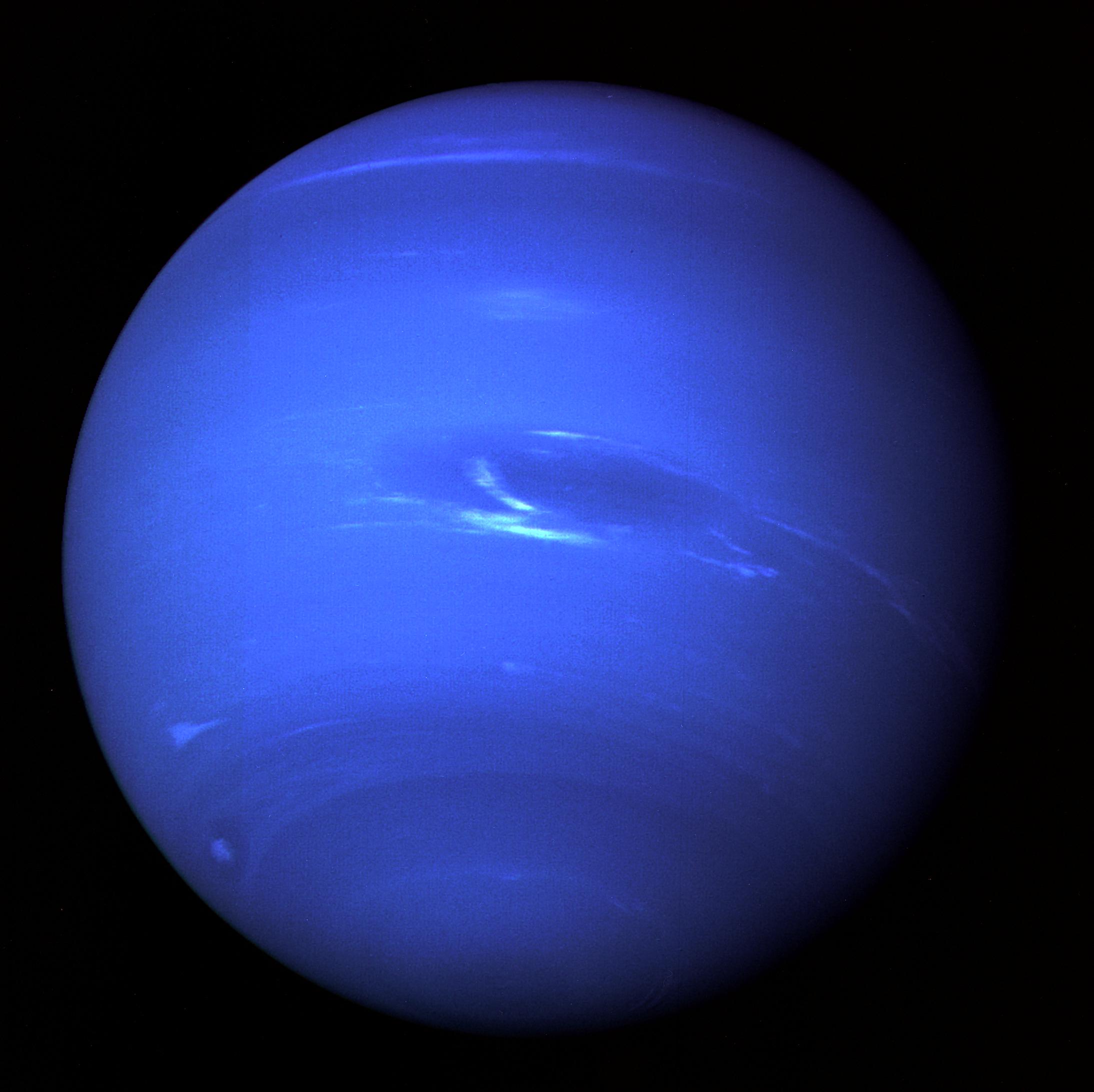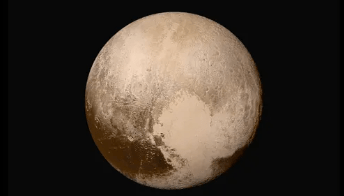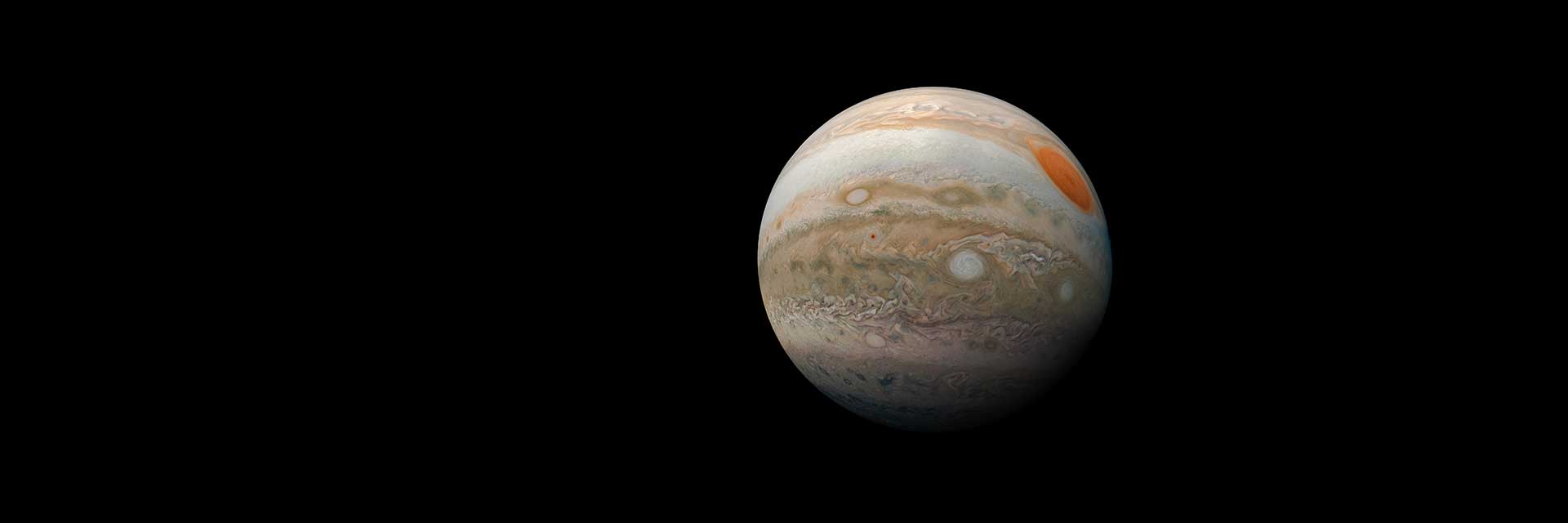
Jupiter
Jupiter is the fifth planet from the Sun, and the largest in the solar system – more than twice as massive as the other planets combined.
10 Things About Jupiter
Facts About Jupiter
Jupiter is a world of extremes. It's the largest planet in our solar system. If Jupiter was a hollow shell, 1,000 Earths could fit inside.
Jupiter also is the oldest planet, forming from the dust and gases left over from the Sun's formation 4.5 billion years ago. But it has the shortest day in the solar system, taking only 10.5 hours to spin around once on its axis.
Read More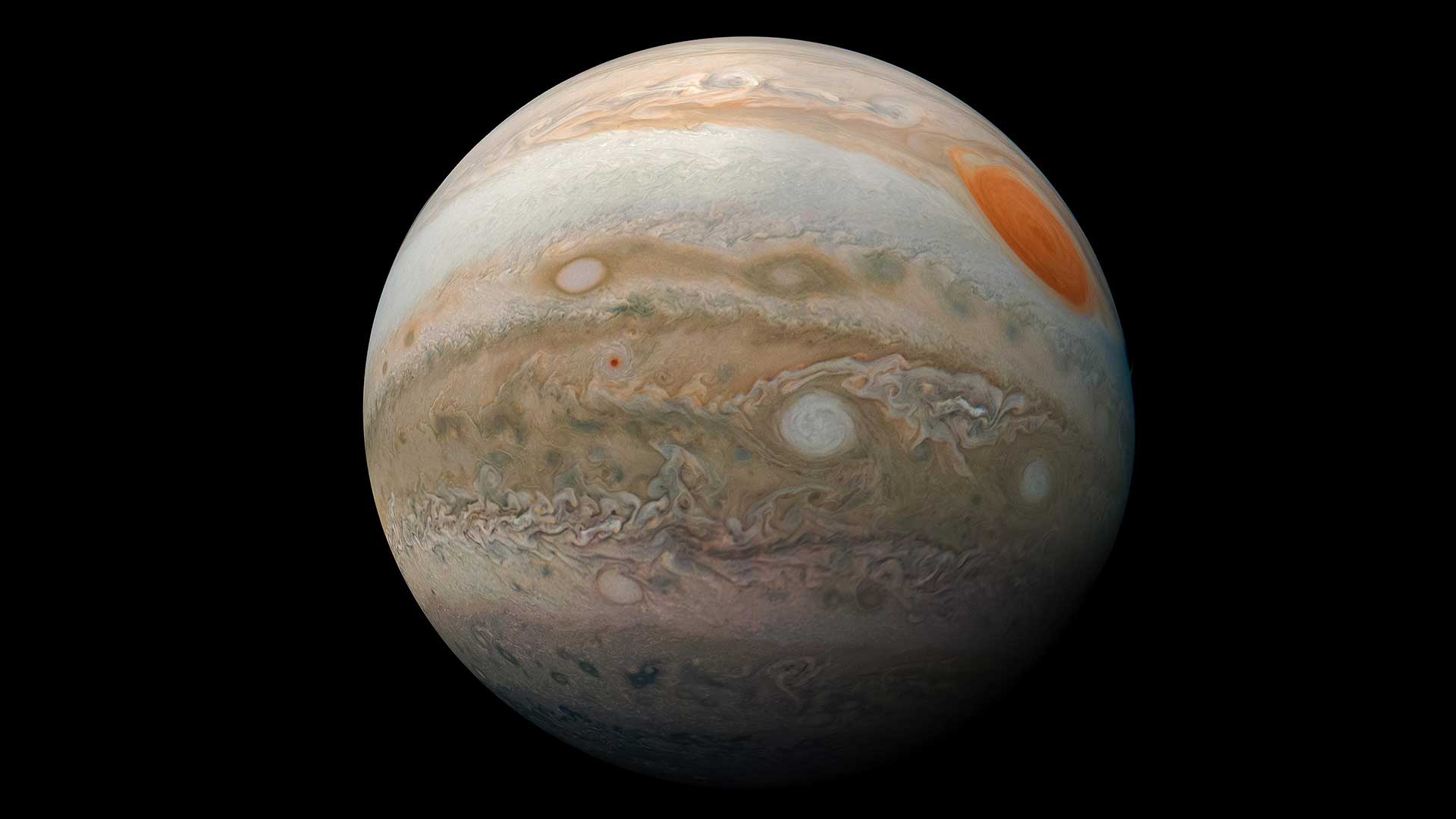
Exploring Jupiter
The first detailed observations of Jupiter were made by Galileo Galilei in 1610 with a small, homemade telescope.
More recently, this planet has been studied by orbiters, probes, and spacecraft passing by on their way to other worlds. NASA’s Juno spacecraft currently is studying the giant planet from orbit. Europa Clipper will launch in October 2024 to study Jupiter's icy moon, Europa.
Read More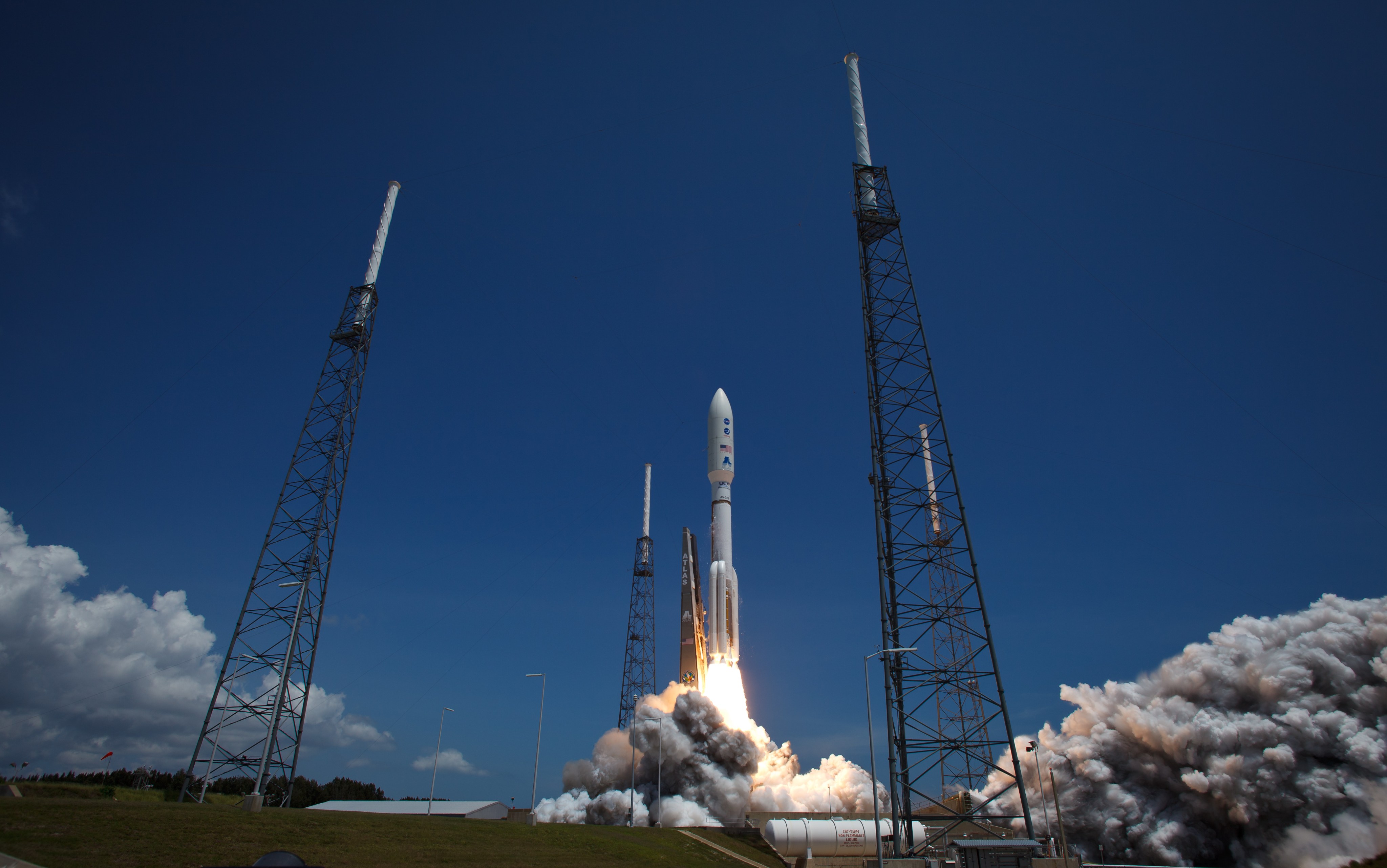
Moons of Jupiter
Jupiter has 95 moons that have been officially recognized by the International Astronomical Union.
But the number doesn't capture the complexity of the Jovian system of moons, rings and asteroids. The giant planet has thousands of small objects in its orbit.
Read More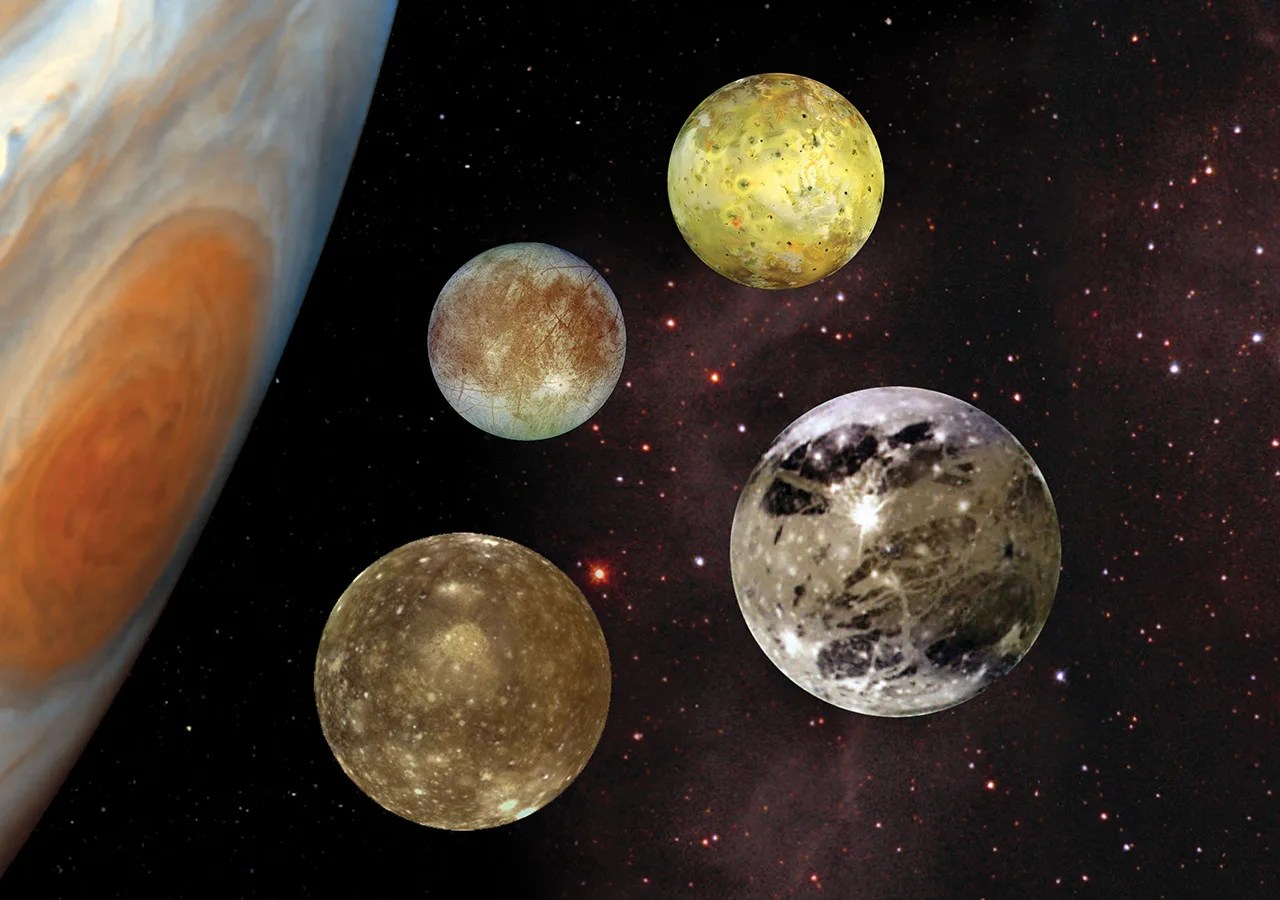
Jupiter Resources
Explore a curated collection of Jupiter resources, including activities that can be done at home, as well as videos, animations, posters, and online interactives.
These resources are suitable for educators, students, and anyone interested in learning more about Jupiter!
Read More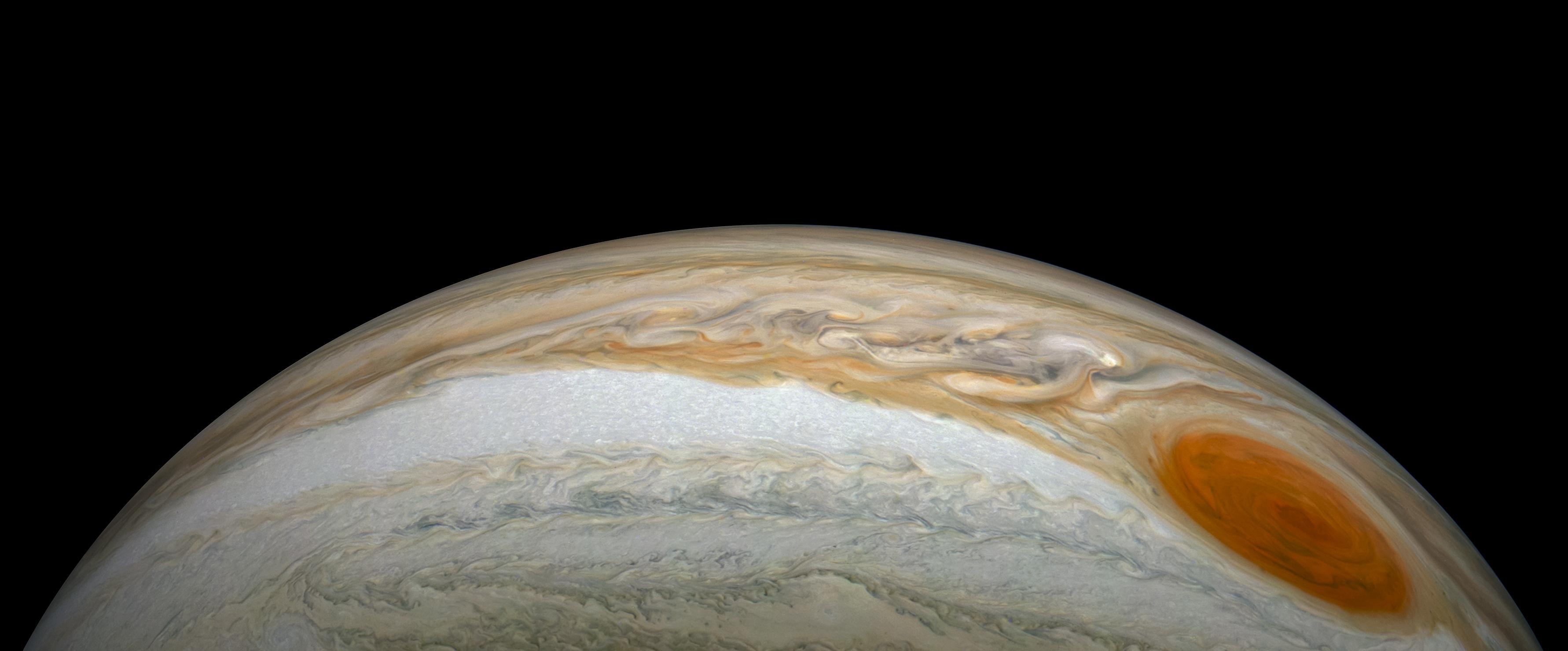
Jupiter
Missions to Jupiter
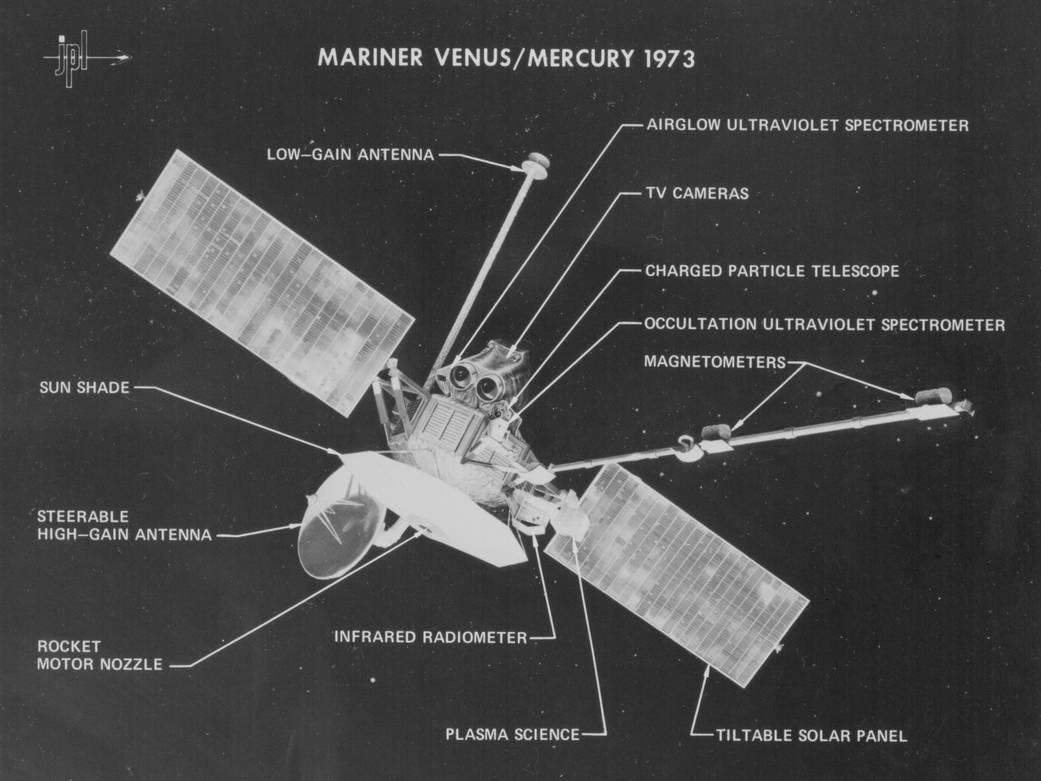
Pioneer 10
NASA's first spacecraft to visit the outer planets, Pioneer 10 was designed as a 21-month mission to Jupiter, yet lasted more than 30 years.
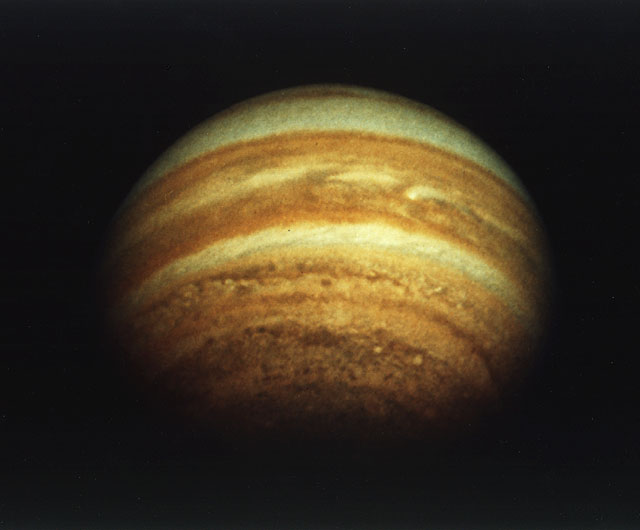
Pioneer 11
The sister spacecraft to Pioneer 10, it flew even closer to Jupiter in 1974 than its sibling had, passing while en route to its destination, Saturn.
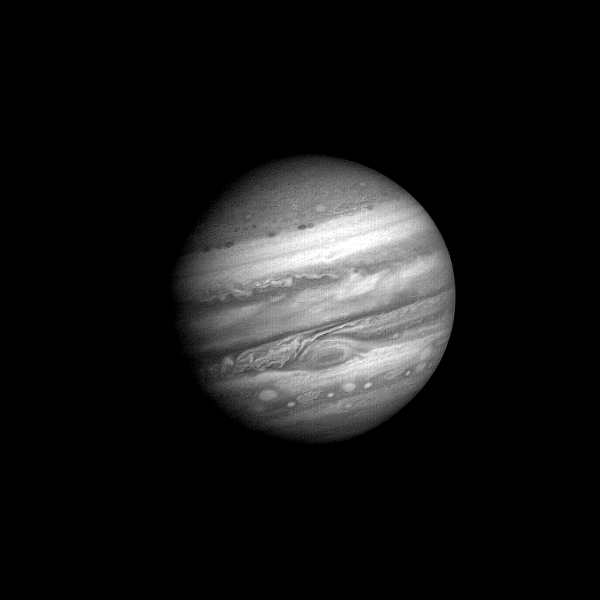
Voyager 1
After it arrived at Jupiter in 1979, Voyager 1 discovered a thing ring around the planet, two new moons, and active volcanoes on the volatile moon Io, before continuing on to Saturn and interstellar space.
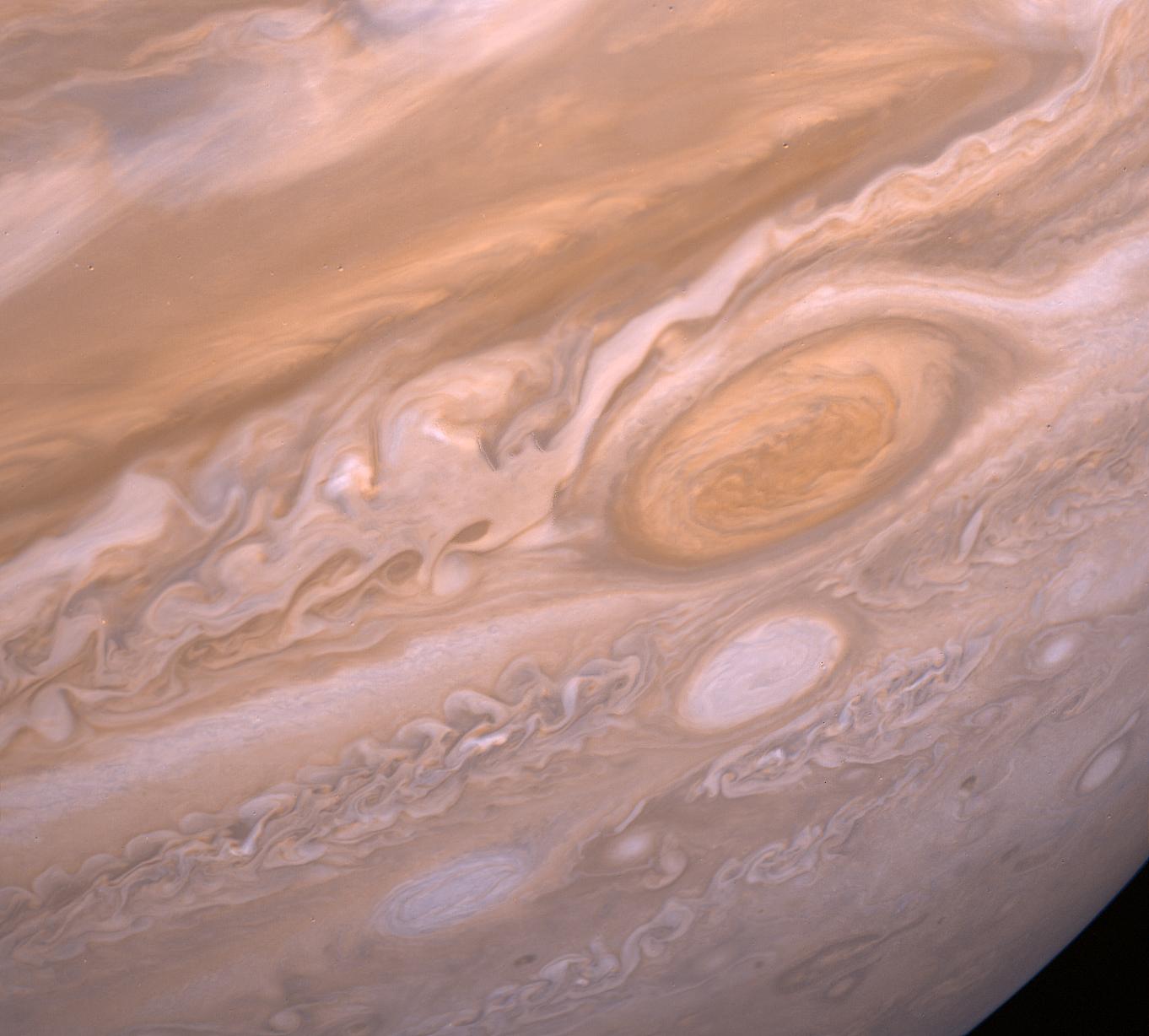
Voyager 2
Voyager 2 reached Jupiter a few months after is sibling, capturing images and data of the planet's clouds, moons, and rings, and detecting changes to the iconic Great Red Spot, during the first leg of its Grand Tour of the outer planets.
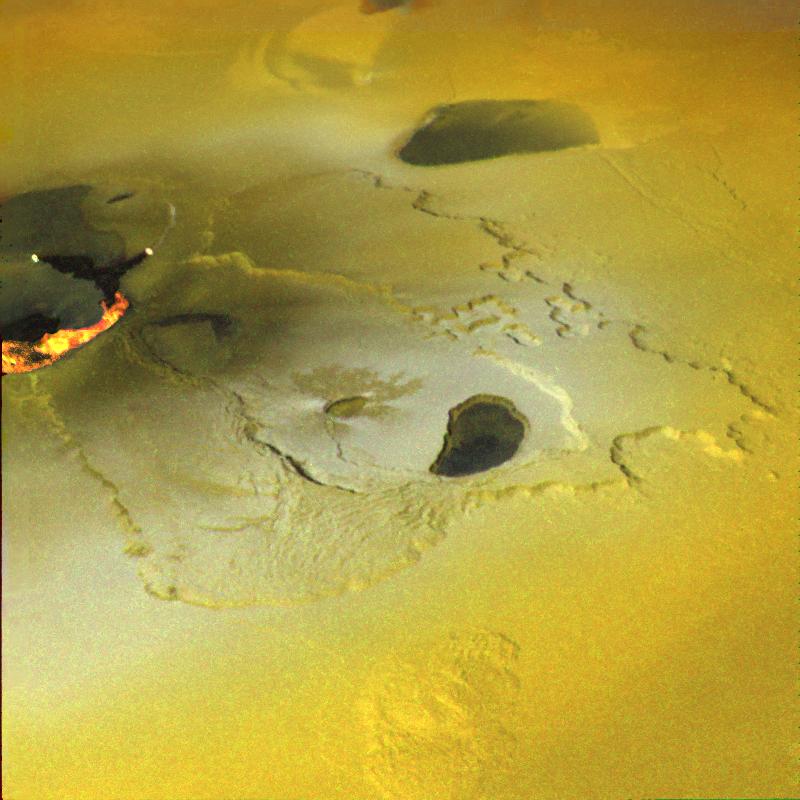
Galileo
During Galileo's 34 orbits of Jupiter, it gathered unprecedented data on the planet's atmosphere, magnetosphere, and evolution. Galileo also observed a comet crash into Jupiter, and while studying its moons discovered evidence of a subsurface ocean on Europa, Ganymede's unique magnetic field, and unparalleled volcanic activity on Io.
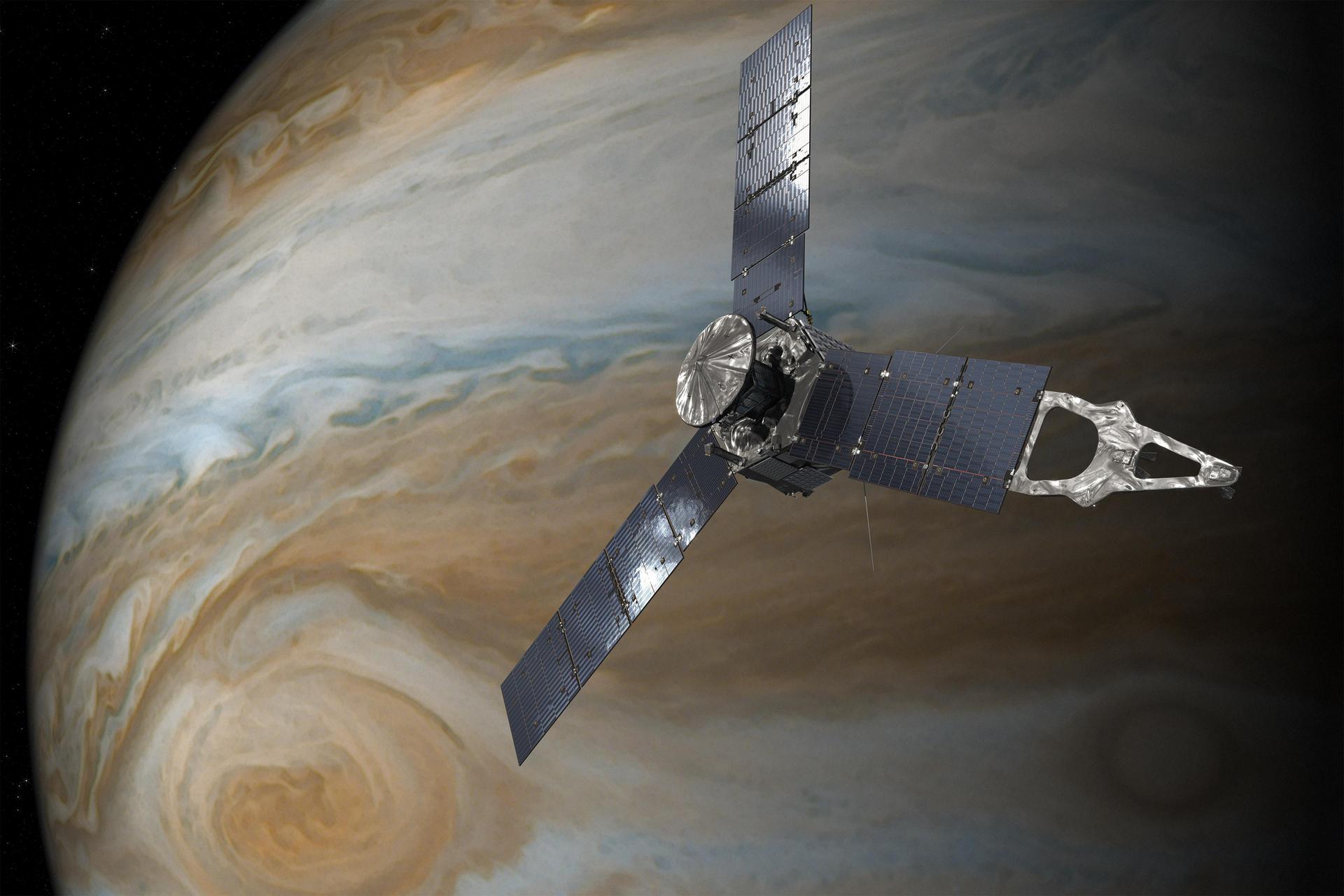
Juno
In orbit around Jupiter since 2016, Juno is probing beneath the planet's dense clouds to answer questions about its origin and evolution, and is scheduled to continue investigating the solar system’s largest planet, its moons, faint rings, and surrounding environment through September 2025.
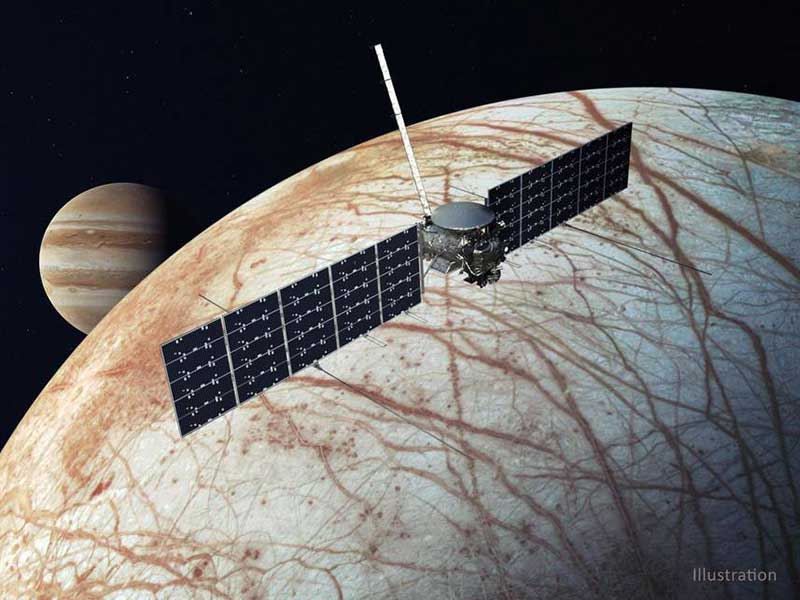
Europa Clipper
NASA's next mission to Jupiter, Europa Clipper is scheduled to launch in 2024 and reach the planet in 2030. Then – during 50 flybys of Jupiter's icy moon Europa – investigate whether there are places below Europa’s surface that could support life.

